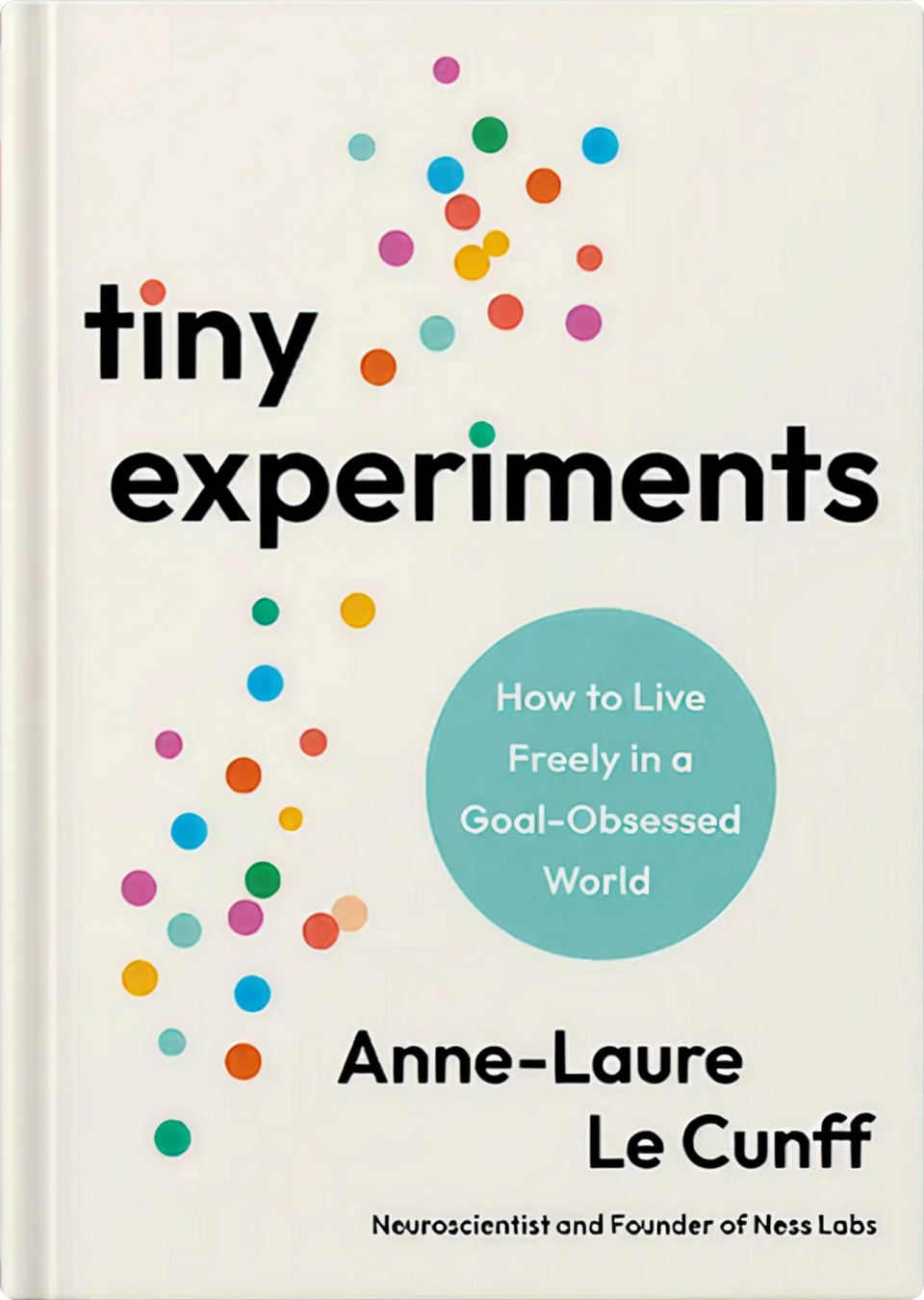Tiny Experiments: How to Live Freely in a Goal-Obsessed World
by Anne-Laure Le Cunff
Added:
Jun 7, 2025
Book Description
Life isn’t linear, and yet we constantly try to mold it around linear goals: four-year college degrees, ten-year career plans, thirty-year mortgages. What if instead we approached life as a giant playground for experimentation? Based on ancestral philosophy and the latest scientific research, Tiny Experiments provides a desperately needed reframing: Uncertainty can be a state of expanded possibility and a space for metamorphosis.
Neuroscientist and entrepreneur Anne-Laure Le Cunff reveals that all you need is an experimental mindset to turn challenges into self-discovery and doubt into opportunity. Readers will replace the old linear model of success with a circular model of growth in which goals are discovered, pursued, and adapted - not in a vacuum, but in conversation with the larger world.
This is a guide to:
- Discover your true ambitions through conducting tiny personal experiments
- Dismantle harmful beliefs about success that have kept you stuck
- Dare to make decisions true to your own aspirations
- Stop trying to find your purpose and start living instead
Tiny Experiments offers not just practical tools to make sure our most vital work gets done, but a guide to reawakening our curiosity and drive in a noisy, busy, disaffected world, so that we can discover and pursue our most authentic ambitions while making a meaningful contribution.
Notes & Highlights
Chapter 2: Escaping the Tyranny of Purpose
…it is possible to break free from cognitive scripts and carve your own path—but it requires a hard reset. In the words of the twentieth-century economist and philosopher John Maynard Keynes: “The difficulty lies, not in the new ideas, but in escaping the old ones, which ramify, for those brought up as most of us have been, into every corner of our minds.”
Chapter 5: Procrastination Is Not the Enemy
The work of Professor Kehr focuses on theories of motivation and doesn’t specifically mention procrastination, but it takes only a few tweaks to adapt it for the purpose of our detective work. Whenever you’re procrastinating, ask yourself whether it’s coming from the head, the heart, or the hand:
- Head: “Is the task appropriate?”
- Heart: “Is the task exciting?”
- Hand: “Is the task doable?”
James Clear, author of the bestselling book Atomic Habits, provides a good illustration of this scenario. The habit that launched his career was writing a new article on Mondays and Thursdays, which he did for three years. But after his book came out, he started feeling resistance when he was writing the biweekly newsletter. After giving it some thought, he decided that sending a regular newsletter was still crucial but that his strategy had to change. Instead of simply scaling back or watering down his previous format, he took the time to genuinely explore potential alternatives.
“After the book came out, I tried to step back and realized that I needed a different style of newsletter,” he told me. “I pondered if there was a version I could create in just one or two hours a week that wouldn’t just match the quality of what I was doing but would actually be better. I believed that among the myriad of possibilities, there had to be something superior to my current approach that still fit within my time constraint.” This process of deliberate reflection resulted in the creation of his 3-2-1 newsletter-three ideas from James, two quotes from others, and one question for the reader to ponder—a much shorter format that has now amassed millions of readers.
Chapter 7: Creating Growth Loops
Metacognition can be applied in countless ways to help us discover what’s next, whether it’s in our careers, health, or relationships. This is partly why it’s one of the most popular modules I teach at Ness Labs. But the most cited reason this module changes students’ lives is a simple tool I created to incorporate metacognition into your everyday life. The tool is called Plus Minus Next, and it does what it says on the tin with just three columns; positive observations go in the first column (Plus), negative observations in the second column (Minus), and plans for what’s next in the last column (Next).
Chapter 9: How to Dance with Disruption
Times of disruption are an opportunity to relax your grip on the outcome while you keep on showing up.
After years of inner work, Michael Singer arrived at the same conclusion: “I could see that the practice of surrender was actually done in two, very distinct steps: first, you let go of the personal reactions of like and dislike that form inside your mind and heart; and second, with the resultant sense of clarity, you simply look to see what is being asked of you by the situation unfolding in front of you.
Get a copy
